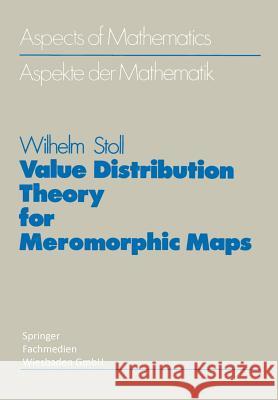Value Distribution Theory for Meromorphic Maps » książka
Value Distribution Theory for Meromorphic Maps
ISBN-13: 9783663052944 / Angielski / Miękka / 2013 / 347 str.
Value distribution theory studies the behavior of mermorphic maps. Let f: M - N be a merom orphic map between complex manifolds. A target family CI ~ (Ea1aEA of analytic subsets Ea of N is given where A is a connected. compact complex manifold. The behavior of the inverse 1 family ["'(CI) = (f- {E )laEA is investigated. A substantial theory has been a created by many contributors. Usually the targets Ea stay fixed. However we can consider a finite set IJ of meromorphic maps g : M - A and study the incidence f{z) E Eg(z) for z E M and some g E IJ. Here we investigate this situation: M is a parabolic manifold of dimension m and N = lP n is the n-dimensional projective space. The family of hyperplanes in lP n is the target family parameterized by the dual projective space lP* We obtain a Nevanlinna theory consisting of several n First Main Theorems. Second Main Theorems and Defect Relations and extend recent work by B. Shiffman and by S. Mori. We use the Ahlfors-Weyl theory modified by the curvature method of Cowen and Griffiths. The Introduction consists of two parts. In Part A. we sketch the theory for fixed targets to provide background for those who are familar with complex analysis but are not acquainted with value distribution theory.











